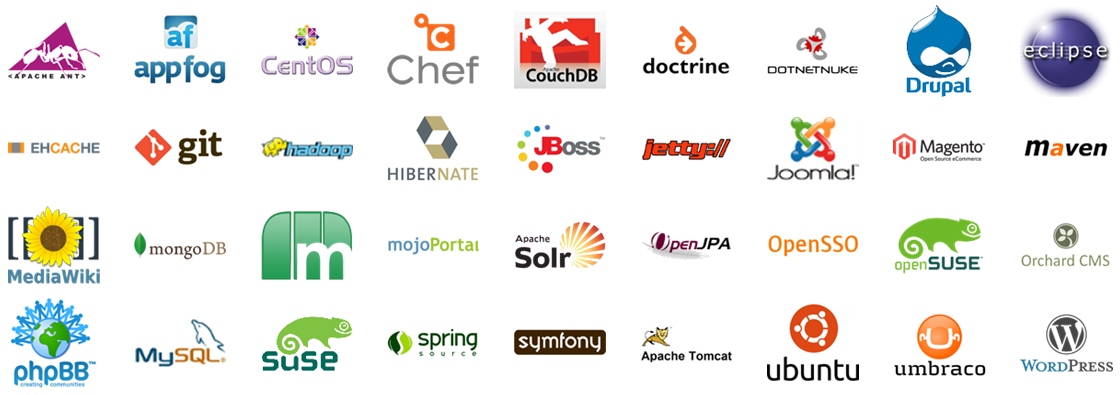This article is written by Pragya Dhoundiyal.
In today’s close-knit world, the tech-savvy generation is using open source software in some form or the other completely unaware about how it is so crucial in shaping their lives. There is a growing interest and hence an increment in the investments in such software. A perfect example is of Mozilla, which makes products like FireFox so as to empower the web users. There has been 70% increase in investments in OSS according to industry research.
What is Open Source and how did it come to existence? :
Open source software is software that is free for everybody to access and use, like Wikipedia. This concept of open source was perceived by Richard Stallman in 1980’s. He believed that restricting unlicensed access to the software was a crime against humanity. The introduction of the U.S. Copyrights Act, 1976 led to an increase in the number of companies that were using copyrights in order to prevent usage of the ‘source code’ of their software on their competitor’s computer. So there was a rise in such proprietary software. Richard Stallman himself became a victim of this close source system, which prompted him to take up the GNU project to develop Unix-like computer operating system composed of free software.
It was basically a ‘Copyright vs. Community’ issue. Stallman argues that the term “intellectual property” is designed to confuse people, and is used to prevent intelligent discussion on the specifics of copyright, patent, trademark, and other laws by lumping together areas of law that are more dissimilar, than similar. Now, open source software makes the source code available, with a license by the copyright holder. The copyright restrictions are either relaxed or non-existent. A license defines the rights and obligations granted by a licensor to a licensee. So the user of the copyrighted work is not completely at will to use it the way s/he wants to and it has been held by the U S federal court that such terms are legally binding. Hence it is not that the person loses the copyright over his work, it is just that the original owner is making his copyrighted work available for further modifications. It is just that there are many co-developers who set into the picture once the project is brought out in the open.
Benefits of Open Source Software:
The first and foremost benefit is that everybody can freely access the source code. Not only can people access it but they can make additions and subtractions to it, in order to make it function in a better manner. The license permits users to inspect, use, improve, expand, and distribute it further freely. 80% of the internet infrastructure is based on open source software. This is because they have much to offer, has system security, reliability, interoperability, managing backend activities of the organizations, all this in turn helps in power management which contributes to IT assets savings.
This is a highly competitive field which needs a much higher degree of cooperation and hence puts an end to the helplessness due to predatory lock-ins. Everybody in the community is free to share their tips and tricks which is a very healthy trend for any society to grow as innovation is encouraged. Since the software is an open source, people don’t need to start from the scratch and can simply save time by just adding the required features, so the productivity goes on increasing in the process. It is a well-known fact that to grow in a society we need everybody’s cooperation and cannot grow single-handedly as each one has some limitation. Most importantly this cuts the dependence of the society on a few privileged people as now each one in the society has the source code. The companies using such software have a higher penetration capability and also a competitive advantage.
CTO lastminute.com stated that: By switching to OSS they were expecting to cut 20% of their IT budget.
Myth Busters:
Some believe that the control over their work is lost, which is not the case, because it is the initiator of the project who actually gives direction to where ever the project is heading.
The prefix open is believed to connote something unsafe. On the other, since so many people are involved, the product turns out to be much safer as there are so many vigilant eyes who would keep the unauthorized people at bay.
The biggest misconception plaguing this industry is that free implies there is no monetary value involved; it is not a matter of price instead it means liberty. It is just the access that is made free, but it has to be ensured that the software is maintained and customized according to the needs. It helps in mitigating the risks and costs associated with vendor lock-ins.
Commercialization of OSS:
In order to make money out of open source software, one needs to look at options other than selling the software. Though there is nothing in the definition of open source that prohibits anyone from selling it, but practically since the software is free to be modified when it passes down different hands, there is not much money that one can make out of selling software.
One can indulge in selling service contracts that are needed to support the software. Like Zimbra though easy and free to download, setting it up does need some kind of expertise for which one can charge a decent fee. Maintaining the server needs some kind of know-hows. Another way of minting money in the related businesses is to sell add-ons which enhance the performance of the software, like Woothemes for WordPress.
Though the code may be freely available, they are not under the obligation of providing the documentation. Some software has little use without documentation, so this is another aspect that one can look into. One can come up with a manual sharing his or her expertise and then sell it. Source codes cannot run directly in some computer languages, so these need to be first compiled into binary languages which are specific to each operating system. Free access to the binaries is not an obligation on the creator, so everyone has to make one for their own depending on their operating systems. This again needs a computer language expert. These binaries can be sold legally.
There are some who do not know how to channelize their expertise in the above mentioned fields, so a consultation in this field which would help them connect with employers who will be ready to pay for his/her expertise can be another business option. Elance and guru.com are some such sites.
Conclusion:
Though the open source software has a lot of advantages, the picture is not always very rosy. There have been instances when some have failed miserably like SourceXchange. Since all the developers are working at ease with no pressure of commercializing the product, the detections of defects may happen late. The focus is on technical aspects rather than the commercial aspects, so building a sound business model is a little difficult to design.
Nonetheless, there have been more success stories than the failed ones. It has been drawing investments at a greater pace, not only have the developers benefitted, but even the general public has been able to enjoy the fruits of development. It can go a long way ahead if we have all the legislation in place to counterbalance any threat to cyber security.
 Serato DJ Crack 2025Serato DJ PRO Crack
Serato DJ Crack 2025Serato DJ PRO Crack











 Allow notifications
Allow notifications



